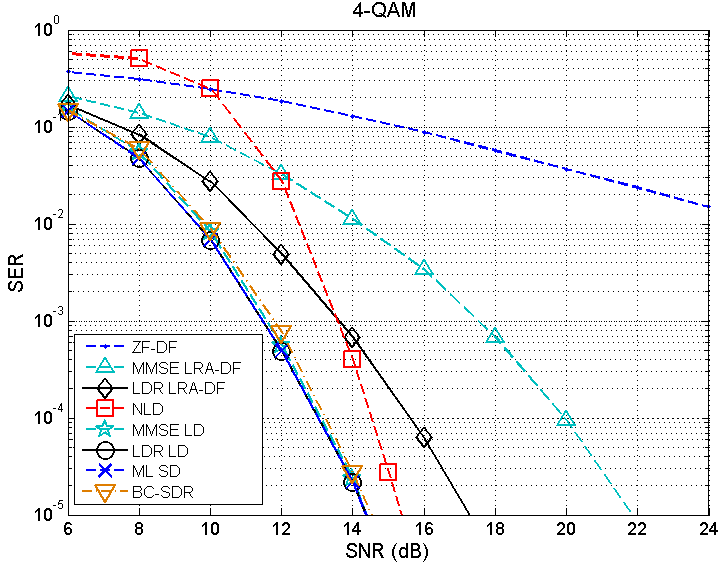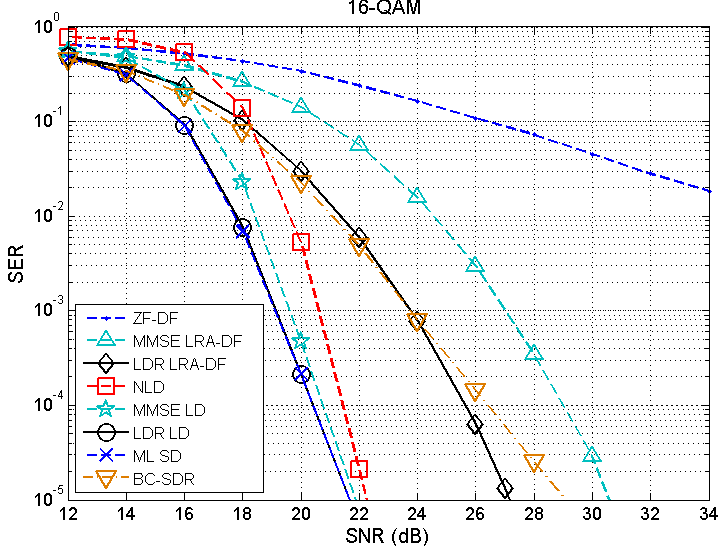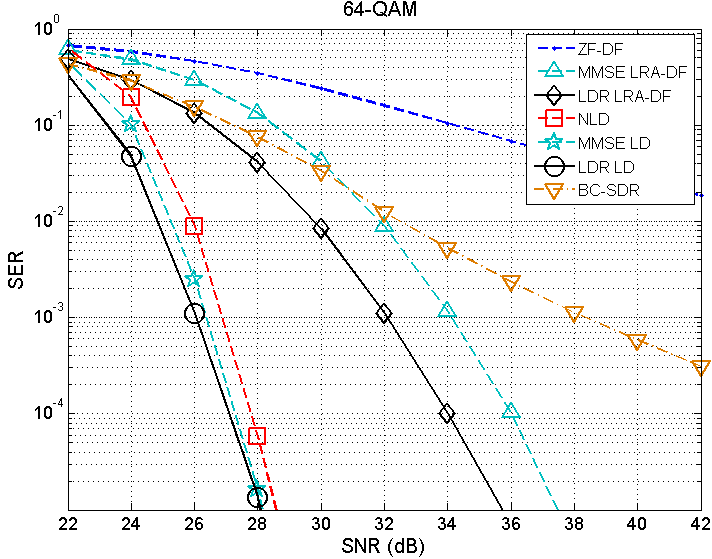Lagrangian dual relaxation (LDR) detector
The archive provided in this page contains ready-to-use binaries and MATLAB functions for the LDR detector. The binaries and functions can be freely distributed for academic or personal use. Please contact the authors if you intend to employ the binaries or functions in the archive for commercial purpose.
Source Code
The LDR detector is written using C MEX function and MATLAB.
Source codes (last updated on 25-11-2013)
Lagrangian dual relaxation detector
The Lagrangian dual relaxation (LDR) detector considers maximum-likelihood (ML) MIMO detection with PAM constellations

where  ,
,  , and
, and  is the symbol bound.
For example, we have
is the symbol bound.
For example, we have  for
for  ,
,  for
for  , and
, and  for
for  .
Note that ML MIMO detection with QAM constellations can also be recast as the above optimization problem.
.
Note that ML MIMO detection with QAM constellations can also be recast as the above optimization problem.
The LDR detector tackles the ML problem by its Lagrangian dual problem

where  is the dual variable associated with the bound constraint, and
is the dual variable associated with the bound constraint, and  is the diagonal operator.
The Lagrangian dual problem is handled by the projected subgradient (PS) method
is the diagonal operator.
The Lagrangian dual problem is handled by the projected subgradient (PS) method
![bm lambda^{(k+1)}= [bm lambda^{(k)}+ alpha_k mathbf g^{(k)}]^+,](eqs/2229398276285889238-120.png)
where ![[cdot]^+](eqs/4858072119522187010-120.png) is the projection on to the nonnegative orthant,
is the projection on to the nonnegative orthant,  is a predefined stepsize sequence, and
is a predefined stepsize sequence, and  with
with

The above problem is an integer least-squares problem, which can be solved optimally by a lattice decoder (LD). Alternatively, we can adopt inexact LD and lattice reduction aided (LRA) methods for efficient approximations.
For more detailed description of the LDR detector, please see the following paper
Jiaxian Pan, Wing-Kin Ma and Joakim Jaldén “MIMO Detection by Lagrangian dual maximum-likelihood relaxation: Reinterpreting regularized lattice decoding,” IEEE Trans. Signal Process., vol. 62, no. 2, pp. 511-524, Jan. 2014. [PDF]
Simulations
We demonstrate the performance of the SDR detector in problem size  .
.
 |
 |
 |